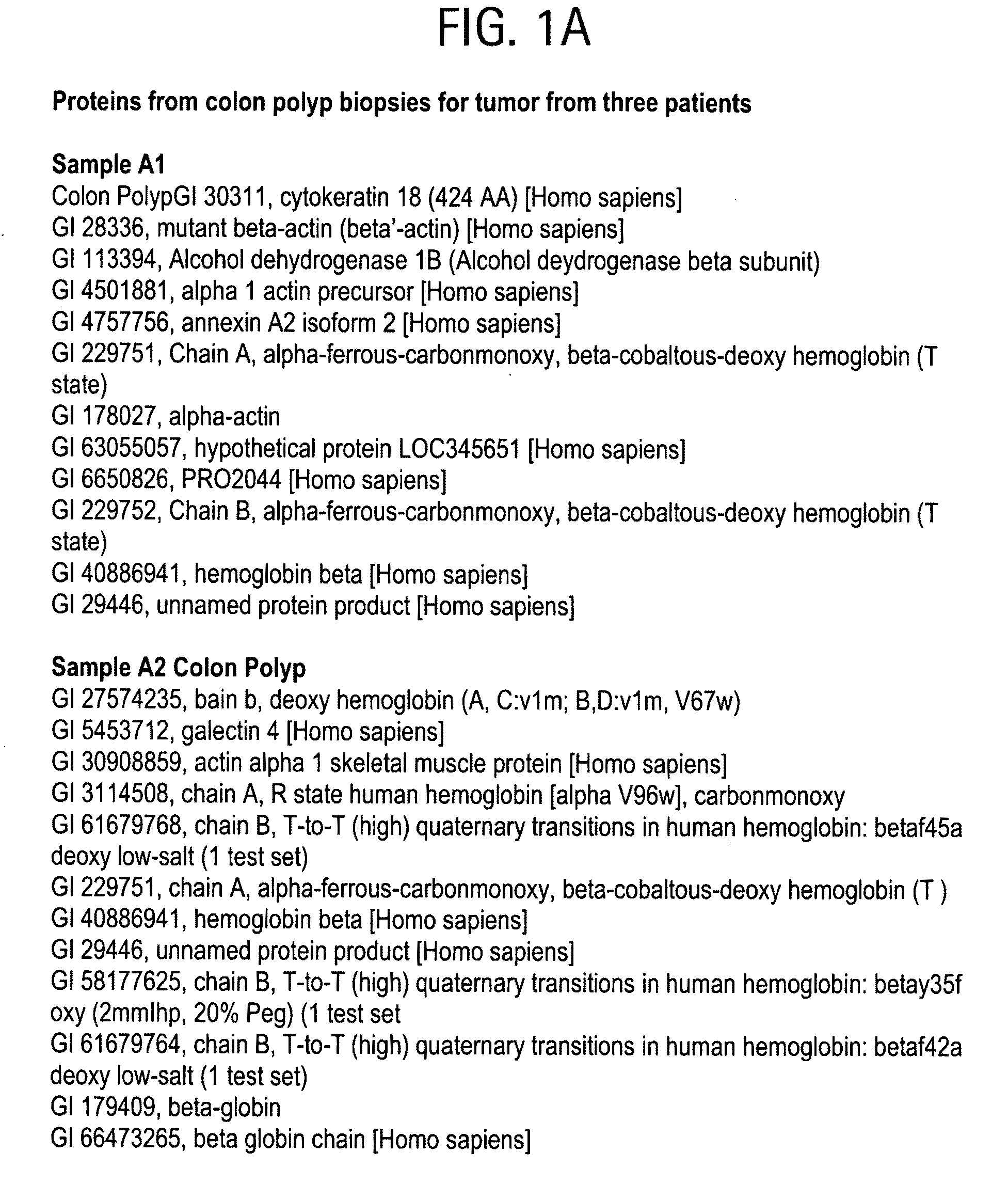Methods for detecting colon carcinoma
a colon carcinoma and cancer technology, applied in the field of cancer diagnosis, can solve the problems of increasing national expenditures by $0, affecting the probability of cancer cells, and being inferior to other strategies such as fecal occult blood testing, fobt, colonoscopy, etc., and achieves the effect of relatively low probability of cancer cells
- Summary
- Abstract
- Description
- Claims
- Application Information
AI Technical Summary
Benefits of technology
Problems solved by technology
Method used
Image
Examples
example 1
[0074]Specimens from individuals with colon adenocarcinoma were compared with normal appearing colonic tissue from average risk individuals who completed a screening colonoscopy. During endoscopy using standard biopsy forceps, eight samples each measuring 2 mm×3 mm were obtained from each patient. Samples were immersed immediately in a solution of dimethyl sulfoxide (DMSO) 2%, glycerol 20%, and ethyl alcohol 78% and stored at 4° C. This mixture both fixes without cross-linking the proteins and cryoprotects the tissue. (Terracio et al., J Histochem Cytochem. 1981; 29:1021-1028; Rosene et al., J Histochem Cytochem. 1986; 34:1301-1315) Cryosections were obtained for IMS, hematoxylin and eosin histopathological staining, and protein extraction. A pathologist blinded to the clinical data, reviewed each specimen. Proteins were extracted from the colon tissue with organic solvent and high pressure using ProteoSolve and the Barocycler respectively (Pressure BioSciences, West Bridgewater, Ma...
example 2
[0077]Biopsy tissue was cryo protected by immediate immersion in a mixture of dimethyl sulfoxide, DMSO 2% / glycerol 20% / ethanol 78%. Cryo sections, 1μ thick, could be obtained without freezer artifact that would otherwise destroy the tissue architecture. Contiguous 1μ sections were obtained for histology, IMS, and protein extraction with high pressure (Barocycler, Pressure BioSciences). The complete protocols are detailed in the references, herein incorporated by reference. (Pevsner et al. “Microtubule Associated Proteins (MAP) and Motor Molecules: Direct Tissue MALDI Identification and Imaging.” 2007, British Mass Spectrometry Society, Edinburgh, Scotland ; Pevsner et al., “Colon Cancer: Protein Biomarkers in Tissue and Body” 2007; Pevsner et al. British Mass Spectrometry Society, Edinburgh, Scotland, “Colorectal Carcinoma—Field Defects in Satellite Tissue” 2007; Vecchione et al., “Prophylactic Estrogen (Estradiol) Therapy” 2007, British Mass Spectrometry Society, Robinson College, ...
PUM
 Login to View More
Login to View More Abstract
Description
Claims
Application Information
 Login to View More
Login to View More - R&D
- Intellectual Property
- Life Sciences
- Materials
- Tech Scout
- Unparalleled Data Quality
- Higher Quality Content
- 60% Fewer Hallucinations
Browse by: Latest US Patents, China's latest patents, Technical Efficacy Thesaurus, Application Domain, Technology Topic, Popular Technical Reports.
© 2025 PatSnap. All rights reserved.Legal|Privacy policy|Modern Slavery Act Transparency Statement|Sitemap|About US| Contact US: help@patsnap.com



